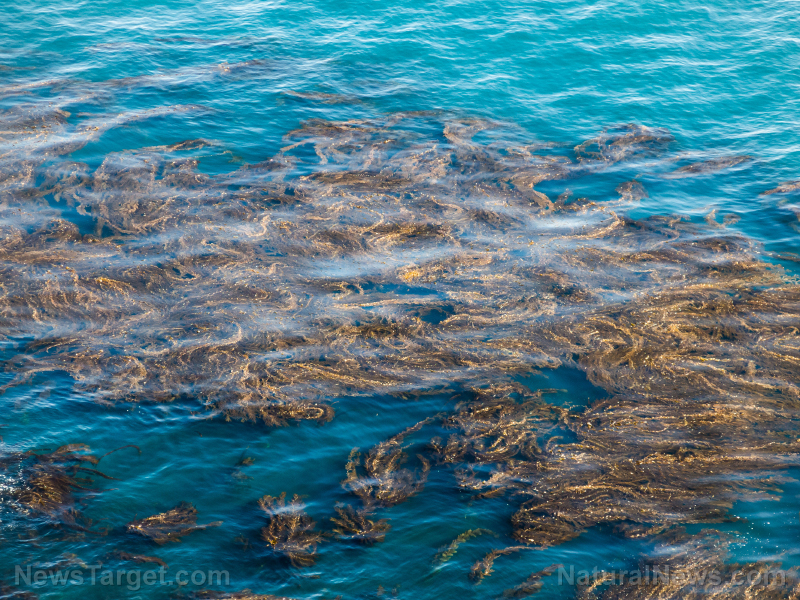Chesapeake Bay estuary is recovering: The return of aquatic vegetation helps neutralize pollution, allowing ecosystems to re-establish
06/23/2018 / By Janine Acero

Vegetation is an essential part of any aquatic ecosystem. Sick or dying underwater vegetation, typically due to pollution, indicates that the ecosystem is in trouble, which leads to degradation of water quality. On the other hand, thriving vegetation is a sign of a healthier ecosystem.
This is especially critical for the Chesapeake Bay estuary; underwater grasses provide habitat for fish and other aquatic animals, stabilize sediments, and help clarify the water. Since the 1970s, pollution and human development have decimated the population of underwater grass in the Chesapeake Bay, further degrading the water quality. States surrounding the Bay have been working together since 2010 to restore its ecosystems.
One study, published in the Proceedings of the National Academy of Sciences analyzed the positive impact of long-term nutrient reduction on valuable ecosystems in the estuary.
The study, led by Jonathan Lefcheck, Ph.D., formerly of the Virginia Institute of Marine Science (VIMS) and now at the Bigelow Laboratory for Ocean Science, showed a 23-percent decrease in average nitrogen levels and an eight-percent reduction of average phosphorus levels, which resulted in a significant increase of Submerged Aquatic Vegetation (SAV) in the Bay. Data analysis indicated that this ecosystem recovery is the biggest resurgence of underwater grasses ever recorded.
The research team said that cutting pollution, as well as conservation incentives, promoted the return of aquatic vegetation, which then led to a healthier Chesapeake Bay.
“It’s a humbling and unique opportunity,” stated Lefcheck. “These efforts began before I was even born, but we are at a stage now where all of these different threads can be pulled together to unveil a picture of unprecedented success. This is a message of hope, and I look forward to a future when the Bay is filled with grasses, something I never thought I would see during my lifetime.”
The scientists determined how the reduction of pollutants – such as nitrogen and phosphorus – is the key driver to this ecosystem recovery. The analyzed data in two ways: One focusing on the flow of nutrients from the land to the waterways; and one showing what happens to SAV once the nutrients reach the water.
Senior co-authors Dr. William Dennison of the University of Maryland Center for Environmental Science and Dr. Robert “JJ” Orth of VIMS have worked on underwater grasses and water quality in the Chesapeake Bay ecosystem restoration project for decades.
According to Dennison: “J.J. and I have had the distinct privilege of facilitating research that confirms a direct correlation between conservation actions undertaken by a broad partnership and ecosystem responsiveness that is leading to positive ecological outcomes.”
“The EPA Chesapeake Bay Program is working and can serve as a model for the rest of the world,” he added.
Orth noted that he feels proud of the team of both new and experienced researchers for the progress and accomplishments thus far of the restoration project. “I really feel the torch is being passed to a next generation of scientists who bring both the passion and knowledge needed to continue the vital work of marine science required to keep our Chesapeake Bay flourishing. What has been a lifetime of work for Bill and me can now be analyzed and managed with analyses of long term data sets in creative ways to highlight this wonderful recovery.”
The Chesapeake Bay Program
The Chesapeake Bay Program is a partnership between the states of Delaware, Maryland, New York, Pennsylvania, Virginia, and West Virginia; the District of Columbia; and the federal government, represented by the Environmental Protection Agency (EPA).
The program relies on funding from community groups, local government and non-governmental organizations, which engage in pollution mitigation efforts, such as redesigning urban surfaces to reduce stormwater runoff and subsidizing farmers to grow winter cover crops that help retain nutrients on fields.
The study on the Chesapeake Bay has spanned decades of analysis and investigation on the estuary, and the aforementioned study shows a positive impact of management actions on the huge resurgence of underwater vegetation. The ongoing restoration efforts provide an outline for effective pollution abatement and may be applied to other polluted bodies of water, in an effort to restore more aquatic ecosystems in other places.
Head on to Environ.news for more updates on the Chesapeake Bay and other ecosystem restoration projects.
Sources include:
Tagged Under: aquatic ecosystems, aquatic habitats, aquatic life, aquatic vegetation, bodies of water, Chesapeake Bay, conservation, ecosystem recovery, ecosystem restoration, estuaries, Nitrogen, phosphorus, restoration projects, seagrass, Submerged Aquatic Vegetation, underwater grass, water quality
RECENT NEWS & ARTICLES
COPYRIGHT © 2017 ENVIRON NEWS




















